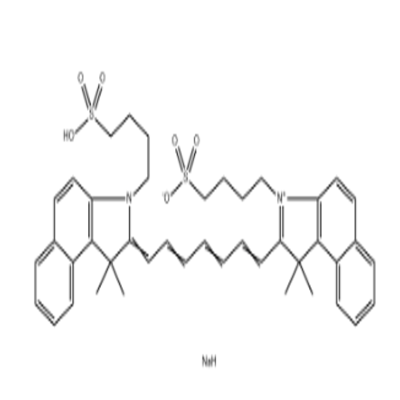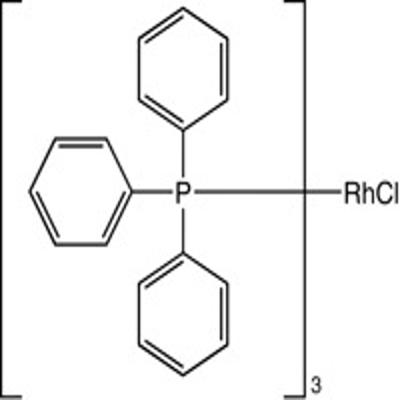Local pharmaceutical companies face the "encounter war" and multinational pharmaceutical companies become the biggest winners?
-
Last Update: 2020-01-06
-
Source: Internet
-
Author: User
Search more information of high quality chemicals, good prices and reliable suppliers, visit
www.echemi.com
Who is the biggest winner under the current Chinese medical reform policy? In 2019, multinational pharmaceutical companies successively published the third quarter report, and the Chinese market data was undoubtedly "surprising": MSD's 90% growth made other multinational pharmaceutical companies "out of reach"; Roche's mainland China market and Hong Kong market, the first nine months' performance increased by 53%; Lilly's market sales in the third quarter increased by 33% year-on-year; AstraZeneca's revenue in the first three quarters increased by 37% year-on-year This phenomenon is described by the insiders as "plot reversal" Why? Since the consistency evaluation policy came out in 2015, the national policy encourages "domestic enterprises to replace the original research", and domestic enterprises have given great expectations On the one hand, local pharmaceutical companies believe that generic drugs that pass the consistency evaluation will get preferential policies On the other hand, they believe that the era when the patents of multinational pharmaceutical companies expire and the original research drugs maintain high prices in China will never return In the view of the insiders, the business of multinational pharmaceutical companies in the Chinese market will be hit However, with the implementation and promotion of centralized and volume purchase of national drugs, the follow-up logic has not evolved as expected Although the price of original research drugs has been reduced in China, the price of local generic drugs has been further reduced, and the expected dividend has not come This is the main background of the plot reversal Recently, in the live broadcast of 2020 top 10 prediction videos of Chinese medicine launched by e-medicine manager and micro antidote, e-medicine manager talked with Tan Yong, executive editor in chief of e-medicine manager, on the topic of "transnational pharmaceutical enterprises grow rapidly in China and become the biggest winner under the current policy", bringing in an in-depth interpretation of the topic We will also have in-depth discussions with experts and scholars on this topic again at the "new year outlook of China's pharmaceutical industry" held in Suzhou on February 21, 2020 For details, please click to read the original! Sign up now and enjoy the early bird price! "As long as multinational pharmaceutical companies know that products through consistency evaluation will replace the original research, I think they are ready." Tan Yong said The reason for the rapid growth of multinational pharmaceutical companies in China's market is inseparable from the drug audit reform since 2015 The preferential review and approval of innovative drugs and the negotiation policy of medical insurance cleared up the barriers for the access and payment of imported new drugs in the Chinese market The long backlog of imported innovative drugs entered China quickly and rapidly According to MSD's quarterly report, the rapid growth of China's market is driven by the newly listed k-drug and nine price HPV vaccine The year-on-year growth rates of Herceptin and avidin 2019q2mat of Roche reached 128.4% and 90.5% Data shows that in 2018, China approved 48 new drugs to be listed, 38 of which were imported and 10 were made in China In 2019, nmpa approved a total of 51 new drugs, including 39 imported new drugs and 12 domestic new drugs In 2016, the average time difference between the marketing of imported innovative drugs in China was 8.4 years, and in 2019, it has been shortened to an average of 4.6 years In 2020, it can also be predicted that a large number of imported new drugs that have been listed in the global market have not entered the Chinese market, and more innovative drug products will be produced at the source of transnational pharmaceutical enterprises With the increase of their familiarity in China, this growth rate will obviously continue "Behind this growth is actually a reserve of innovation, or a large strategic reserve When mature products with high gross profit will be replaced, there is no doubt that innovative products will be highlighted in the next step In fact, we can see that there are some multinational pharmaceutical companies whose growth in China is not satisfactory because their innovative products are not introduced quickly " Tan Yong said This process also gives the current local pharmaceutical enterprises two enlightenment The first is policy research "The pharmaceutical industry is actually a strong regulatory industry, so why does a policy set off a huge wave in the industry? Why do we become frightened when the policy comes out? In fact, domestic pharmaceutical companies generally lack of policy research, so there will be no plan measures at all, resulting in such a drastic response " In fact, the similar industrial pattern that is taking place in our country is not without "front car" for reference Recently, according to the research report issued by CITIC Securities, neighboring Japan successively completed drug re evaluation in 1980s, and then significantly reduced drug prices, improved patent protection system, eliminated tariff barriers, and further opened up the domestic pharmaceutical market Under the background of declining drug prices and intensifying competition, foreign pharmaceutical enterprises have achieved high-speed growth in the Japanese market, but the growth of local pharmaceutical enterprises has slowed down significantly, with only a low single digit growth At the same time, China and Japan take social security as the main payer of medical expenses Their historical experience should be used for reference for the future interpretation of the domestic market However, local pharmaceutical companies fail to see the industry trend at the first time and make strategic reserves as early as possible "In fact, the drug regulatory reform in 2015 is to release a strong signal that we should do more basic work on innovation reserve, rather than wait until the arrival of national centralized mining to force us to carry out strategic reserve at the front end." Tan Yong said While observing the trend of China's policy reform, multinational pharmaceutical companies are rapidly adjusting their own strategies From the first round of "4 + 7" volume procurement, only two multinational pharmaceutical companies won the bid, to the "4 + 7" expansion, many multinational pharmaceutical companies participated in one after another; since then, the multinational pharmaceutical companies' wait-and-see attitude towards the medical insurance negotiation, to the 2019 medical insurance negotiation, the imported drugs basically gave the lowest price in the world The attitude of multinational pharmaceutical companies towards volume purchasing and health care negotiation has changed significantly, from a strong attitude of maintaining the global price system to a Chinese policy of "price for volume" The reason behind this is that on the one hand, multinational pharmaceutical companies will benefit more and more advanced innovative drugs to Chinese patients, while it is a clear watershed for innovative drugs to enter the medical insurance and not to enter the medical insurance Under the dividend of China's huge medical market, entering the medical insurance catalog can quickly promote the volume of innovative drugs, which is a big premise Another reason, Tan Yong said: "there are also some product mix strategies of multinational pharmaceutical companies that we can learn from For example, I will enter the market with a lower price for the first generation of products, and quickly launch the second and third generation of innovative products to form the relay and combination of subsequent products, while the second and third generation products are usually of higher price " While multinational pharmaceutical companies maintain strong growth momentum, many domestic pharmaceutical companies also feel certain pressure and challenges Because this means that domestic pharmaceutical companies will directly compete with multinational pharmaceutical companies in global new drugs Will domestic innovative medicine face wolf? How will this affect the development of local innovative drugs? CITIC Securities believes that in the field of innovative drugs, except for a few enterprises, domestic pharmaceutical enterprises are difficult to compete with foreign enterprises in the short term, and the dividend of innovative drugs will be mainly concentrated in foreign pharmaceutical enterprises and a few domestic pharmaceutical enterprises Meanwhile, the sharp decline of domestic generic drugs and the opening up of the market almost occur at the same time, and the operating pressure of small and medium-sized enterprises may be greater than that of their Japanese counterparts But the domestic market is still different from the Japanese market The huge local market can provide sufficient space for the transformation of domestic pharmaceutical enterprises In the future, the new drugs of me too class will still have a large explosive force in the domestic market In addition, even though the transformation is difficult, some Japanese enterprises have gradually completed the transformation and upgrading by means of innovative research and development and international market development, spawning world-famous pharmaceutical enterprises such as Takeda, Astaire and Weicai Considering that the domestic market space is larger and the iteration speed of new technology is significantly faster, the transformation speed of domestic pharmaceutical enterprises will be faster than that of Japan The fierce competition among foreign pharmaceutical enterprises will force the domestic research and development of new drugs from me too to me better and best in class, and from fast follow to first in class Although the R & D capacity of foreign pharmaceutical enterprises is leading, it is also easy to "acclimatize" to domestic policy understanding and market development For foreign pharmaceutical enterprises that enter the Chinese market later, cooperation with domestic pharmaceutical enterprises is an important choice for them to rapidly develop the domestic market New trading and cooperation modes between multinational pharmaceutical enterprises and local pharmaceutical enterprises are also emerging, surpassing the previous mode of cooperation only in sales business For example, Amgen has established a strategic partnership with Baiji Shenzhou, aiming at the in-depth cooperation of more than 20 drugs under research, so as to expand its business in China In addition, multinational pharmaceutical companies authorize and divest mature products to focus more on innovative product portfolio For example, in 2019, Lilly sold its antibiotic brand and Chinese production plant to Yiteng pharmaceutical, and GSK transferred its Suzhou plant and its products he puting to Fosun Pharmaceutical In addition, the cooperation between AstraZeneca and LVYE on Xuezhikang has also opened a new cooperation mode "Multinational pharmaceutical companies are increasingly cooperating with local Chinese companies in product level, involving earlier R & D products and unlisted products, which is a very important sign that the innovation ability of local pharmaceutical companies is recognized by the global market." According to Tan Yong A more typical change is that leading multinational pharmaceutical companies are scrambling to establish new institutions in China For example, AstraZeneca has established a $1 billion fund in Wuxi to invest in local start-ups; Merck has established innovation centers in Shanghai and Guangzhou to cooperate with start-ups, academic institutions and local governments.
This article is an English version of an article which is originally in the Chinese language on echemi.com and is provided for information purposes only.
This website makes no representation or warranty of any kind, either expressed or implied, as to the accuracy, completeness ownership or reliability of
the article or any translations thereof. If you have any concerns or complaints relating to the article, please send an email, providing a detailed
description of the concern or complaint, to
service@echemi.com. A staff member will contact you within 5 working days. Once verified, infringing content
will be removed immediately.







